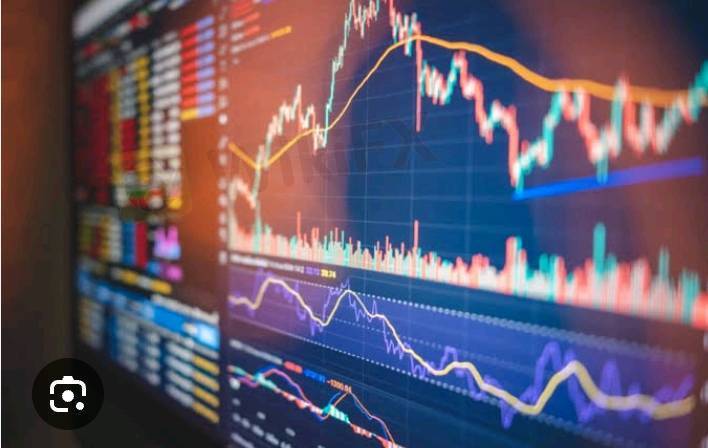
2025-02-06 18:19
IndustryWhat are some common technical analysis tools used
#firstdealofthenewyearAKEEL
Some common technical analysis tools used in forex trading include:
1. Moving Averages: This tool helps smooth out price data over a specific period, making it easier to identify trends. The two most common types are the Simple Moving Average (SMA) and the Exponential Moving Average (EMA).
2. Relative Strength Index (RSI): The RSI measures the speed and change of price movements, helping traders identify overbought or oversold conditions in a market. It ranges from 0 to 100, with levels above 70 indicating overbought conditions and below 30 indicating oversold conditions.
3. Bollinger Bands: This tool consists of a middle band (SMA) and two outer bands that indicate volatility. When the price moves closer to the upper band, it may be considered overbought, while a move toward the lower band may indicate oversold conditions.
4. Fibonacci Retracement: This tool helps identify potential reversal levels in the market by using horizontal lines to indicate areas of support or resistance at the key Fibonacci levels (23.6%, 38.2%, 50%, 61.8%, and 100%).
5. MACD (Moving Average Convergence Divergence): The MACD is a trend-following momentum indicator that shows the relationship between two moving averages of a security's price. It helps traders identify potential buy and sell signals.
6. Support and Resistance Levels: These are key price levels where the market has historically had difficulty moving above (resistance) or below (support). Traders often look for price action around these levels to make trading decisions.
7. Candlestick Patterns: Candlestick charts provide visual representations of price movements and can indicate potential market reversals or continuations based on specific patterns, such as doji, engulfing, or hammer patterns.
Using these tools effectively can help traders make informed decisions based on market trends and price movements. If you want to dive deeper into any specific tool or concept, just let me know!
#firstdealofthenewyearAKEEL
Like 0
Jennifer6859
Trader
Hot content
Industry
Event-A comment a day,Keep rewards worthy up to$27
Industry
Nigeria Event Giveaway-Win₦5000 Mobilephone Credit
Industry
Nigeria Event Giveaway-Win ₦2500 MobilePhoneCredit
Industry
South Africa Event-Come&Win 240ZAR Phone Credit
Industry
Nigeria Event-Discuss Forex&Win2500NGN PhoneCredit
Industry
[Nigeria Event]Discuss&win 2500 Naira Phone Credit
Forum category

Platform

Exhibition

Agent

Recruitment

EA

Industry

Market

Index
What are some common technical analysis tools used
 Nigeria | 2025-02-06 18:19
Nigeria | 2025-02-06 18:19#firstdealofthenewyearAKEEL
Some common technical analysis tools used in forex trading include:
1. Moving Averages: This tool helps smooth out price data over a specific period, making it easier to identify trends. The two most common types are the Simple Moving Average (SMA) and the Exponential Moving Average (EMA).
2. Relative Strength Index (RSI): The RSI measures the speed and change of price movements, helping traders identify overbought or oversold conditions in a market. It ranges from 0 to 100, with levels above 70 indicating overbought conditions and below 30 indicating oversold conditions.
3. Bollinger Bands: This tool consists of a middle band (SMA) and two outer bands that indicate volatility. When the price moves closer to the upper band, it may be considered overbought, while a move toward the lower band may indicate oversold conditions.
4. Fibonacci Retracement: This tool helps identify potential reversal levels in the market by using horizontal lines to indicate areas of support or resistance at the key Fibonacci levels (23.6%, 38.2%, 50%, 61.8%, and 100%).
5. MACD (Moving Average Convergence Divergence): The MACD is a trend-following momentum indicator that shows the relationship between two moving averages of a security's price. It helps traders identify potential buy and sell signals.
6. Support and Resistance Levels: These are key price levels where the market has historically had difficulty moving above (resistance) or below (support). Traders often look for price action around these levels to make trading decisions.
7. Candlestick Patterns: Candlestick charts provide visual representations of price movements and can indicate potential market reversals or continuations based on specific patterns, such as doji, engulfing, or hammer patterns.
Using these tools effectively can help traders make informed decisions based on market trends and price movements. If you want to dive deeper into any specific tool or concept, just let me know!
#firstdealofthenewyearAKEEL
Like 0
I want to comment, too
Submit
0Comments

There is no comment yet. Make the first one.

Submit
There is no comment yet. Make the first one.